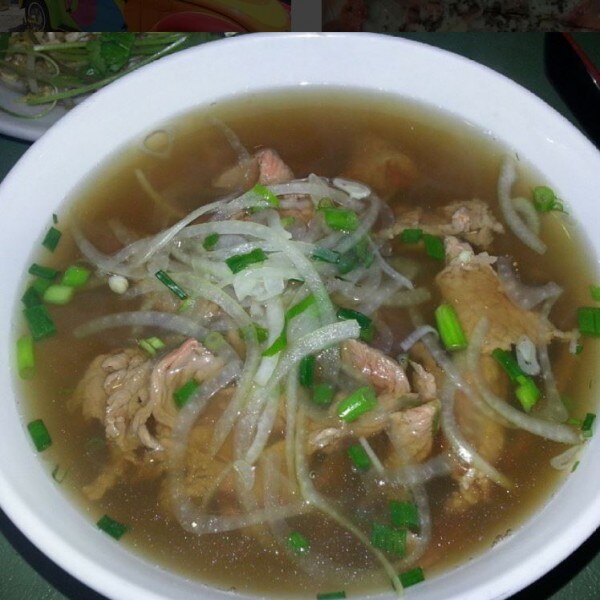Bánh bò is a sweet, chewy sponge cake from Vietnam. It is made from rice flour, water, sugar, and yeast, and has a honeycomb-like appearance on the inside due to the presence of numerous small air bubbles. Coconut milk is also usually a part of the batter, imparting a slight flavor and aroma of coconut. The cake is of Southern Chinese origin, although the Chinese version, called bái táng gāo, does not contain coconut milk. Bánh bò are generally eaten as a dessert, although they may also be consumed as an accompaniment to a meal.
Bánh bò hấp (steamed bánh bò)
Bánh bò nướng (baked bánh bò)
Bánh bò màu (màu = colored)
Vietnamese cuisine encompasses the foods and beverages originated from Vietnam. Meals feature a combination of five fundamental tastes : sweet, salty, bitter, sour, and spicy. The distinctive nature of each dish reflects one or more elements, which are also based around a five-pronged philosophy. Vietnamese recipes use ingredients like lemongrass, ginger, mint, Vietnamese mint, long coriander, Saigon cinnamon, bird's eye chili, lime, and Thai basil leaves. Traditional Vietnamese cooking has often been characterised as using fresh ingredients, not using much dairy or oil, having interesting textures, and making use of herbs and vegetables. The cuisine is also low in sugar and is almost always naturally gluten-free, as many of the dishes are rice-based instead of wheat-based, made with rice noodles, papers and flour. Vietnamese cuisine is strongly influenced not only by the cuisines of neighboring China, Cambodia and Laos, but also by French cuisine due to French colonial rule over the region from 1887 to 1954.

Phở bò (beef noodle soup) from the city of Hội An – different regions have different recipes for their phở.
Bún chả, a dish of grilled pork and noodle and herbs
Bún bò Huế, a spicy, lemongrass rice vermicelli noodle soup served with fresh herbs and vegetables
Mì vằn thắn (wonton noodles soup) influenced by Southern Chinese migrants







